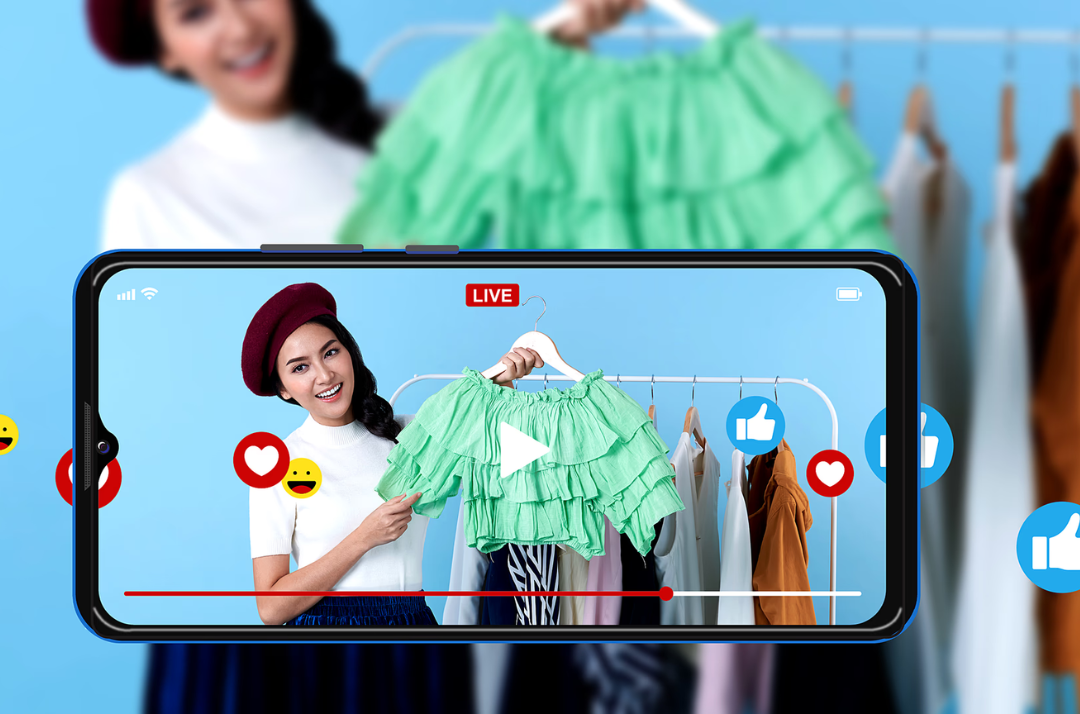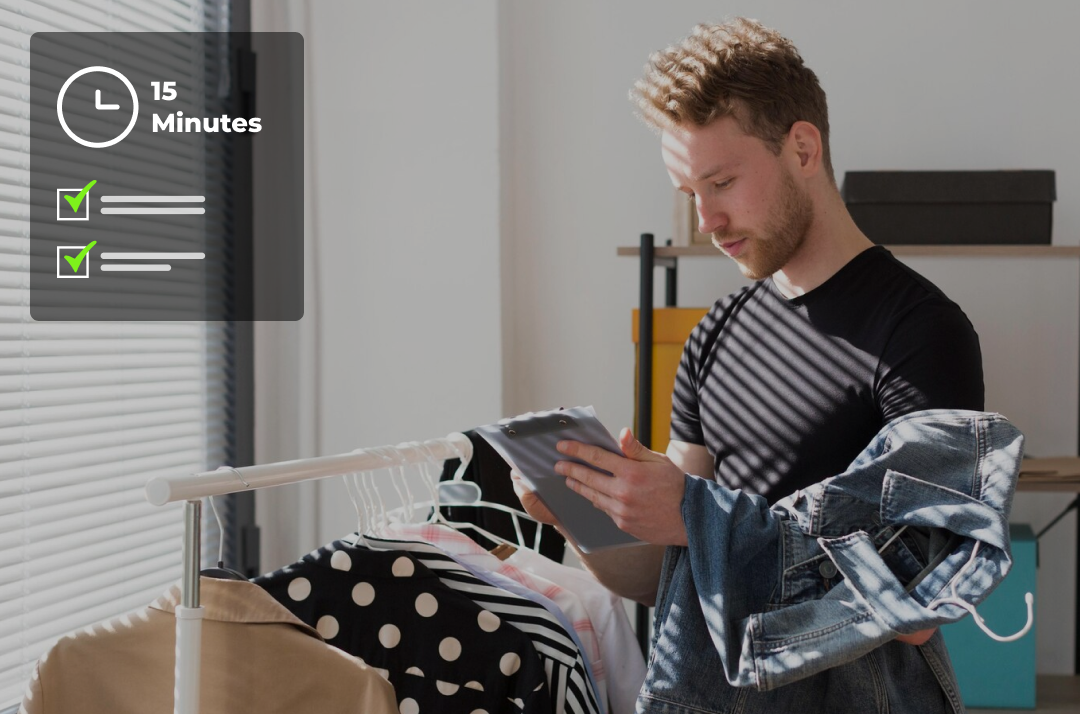E-commerce is evolving at lightning speed—but today’s customers are evolving even faster. Shoppers no longer feel satisfied with static product images or long descriptions. They want real-time interaction, authentic product demonstrations, and instant clarity before they make a purchase.
This shift is so powerful that live commerce is projected to grow at a staggering CAGR of 39.9% from 2025 to 2033, reaching an estimated USD 2,469 billion globally (Grand View Research). That’s not just growth—that’s a market explosion.
So the real question isn’t “Should I use live commerce?”
It’s “How much am I losing by not using it yet?”
In this blog, we’ll explore the key differences between traditional e-commerce and live commerce, the opportunities businesses miss by ignoring it, and how platforms like Mylivecart make it easy to turn live shopping into your next big sales channel.
What Is Live Commerce?
Live commerce blends real-time video streaming with instant online shopping, enabling customers to watch product demonstrations, ask questions, interact with hosts, and purchase—all within the live session.
Think of it as the digital version of walking into a store, talking to a salesperson, and buying the product immediately—except it happens online, in real time, and can reach thousands of viewers at once.
Key elements of live commerce include:
- Live product demos for genuine clarity
- Real-time chat & Q&A
- Seamless in-stream “Add to Cart” for faster, distraction-free purchases.
- Urgency-driven offers and discounts
- Customer engagement tools like polls, comments, likes, and reactions
This makes online shopping feel more interactive, transparent, and trustworthy—three things modern shoppers want.
Traditional E-commerce: Strengths & Limitations
Traditional e-commerce has served brands well for 20+ years. It offers:
- Convenience
- 24/7 accessibility
- Easy product browsing
- Automated transactions
But customers now expect more than static pages and stock photos.
The limitations of traditional e-commerce include:
- Low Engagement: shoppers skim product pages and leave
- Limited Product Understanding: difficult to imagine real use
- Higher Doubts: lower conversions
- Little to no real-time interaction
- Minimal emotional connection to brands
This is why conversion rates have remained stagnant in traditional online stores despite massive traffic growth.
Live Commerce vs. Traditional E-commerce: Key Differences
Here’s a quick comparison to show why live commerce is transforming the future of digital retail:
| Factor | Traditional E-commerce | Live Commerce |
| Customer Engagement | Low | High, interactive, real-time |
| Product Understanding | Based on static content | Clear, visual live demonstrations |
| Trust Building | Slow & limited | Instant through transparency |
| Conversion Rate | 1.5%–3% | Up to 10X higher |
| Interaction | None | Two-way communication |
| Impulse Buying | Low | Very high due to urgency + FOMO |
| Shopping Experience | Passive | Immersive & emotional |
Live commerce essentially solves the biggest gaps in traditional e-commerce:
It makes online shopping feel human, trustworthy, and exciting.
What You’re Losing Without Live Commerce
If you’re still relying only on traditional e-commerce, here’s what you’re missing out on:
Real-Time Engagement: Customers today expect personalized interaction. Without live commerce, you lose the chance to talk directly with your audience, answer queries instantly, and create a shopping experience that feels authentic.
Higher Conversion Rates: Live commerce consistently delivers 2x to 5x higher conversion rates than traditional product pages. Missing this means missing revenue.
Instant Trust & Product Clarity: Seeing a product live—its size, quality, texture, usage—removes doubts that cause cart abandonment.
Competitive Advantage: Early adopters of live commerce are experiencing rapid growth. Without it, you risk being overshadowed by competitors who offer more interactive shopping experiences.
Customer Loyalty & Repeat Sales: Live sessions build community and trust—two major drivers of long-term customer loyalty.
Why Live Commerce Drives Higher Sales
Live commerce isn’t just a different way to sell—it’s a smarter way to sell. It taps into core psychological triggers that influence buying behavior and accelerate purchase decisions. Here’s why it consistently outperforms traditional e-commerce:
1. The Psychology of “See It Live”
Seeing a product in action builds instant trust.
Customers can watch how it:
- Fits
- Performs
- Feels
- Looks in real lighting
- Operates in real hands
This level of transparency eliminates doubts that typically cause hesitation or cart abandonment.
When customers experience products live, they feel more confident in their choices—which directly boosts conversions and reduces return rates.
2. FOMO + Real-Time, Limited Offers
Live video shopping creates urgency naturally.
When hosts announce:
- “Only 20 pieces left!”
- “This discount is only for the next 15 minutes!”
- “Exclusive offer for live viewers!”
Viewers feel a strong Fear of Missing Out (FOMO).
This emotional trigger is one of the most powerful motivators in human decision-making, leading to immediate purchases instead of “I’ll think about it later.”
3. Social Proof During Live Sessions
During live events, buyers don’t feel alone.
They see:
- Comments
- Reactions
- Questions
- Purchases happening in real time
This creates a sense of community validation, reassuring viewers that others are interested and buying too.
When people see others engaging and purchasing, their confidence skyrockets.
This collective excitement amplifies trust and drives higher sales.
4. Faster Buying Decisions
In traditional e-commerce, customers leave to search for reviews or answers—and often never return.
In live commerce, doubts are removed instantly:
- “Is this true to size?”
- “Does this work on oily skin?”
- “Can it be used daily?”
The host answers these in real time, eliminating friction and shortening the buying cycle from days to minutes.
Real-time clarity = immediate action.
How Live Commerce Enhances Customer Experience
A great shopping experience today is not about convenience alone—it’s about connection. Live commerce gives customers a true “store-like” experience from the comfort of their home.
Personalized Human Interaction: Customers can speak directly with the host or seller, ask questions, and get tailored advice—something no product page can provide.
Interactive Shopping, Not Passive Browsing: Live commerce transforms shopping into an event, not a task. With engaging features like:
- Reactions
- Comments
- Polls
- Live Q&A
- Product highlights
customers feel part of the experience, not just viewers.
Instant Customer Support: Instead of sending emails or searching FAQs, viewers get immediate answers.
This reduces frustration and increases satisfaction.
Builds a Community Around Your Brand: Regular live shows create a loyal audience who return for:
- New product drops
- Exclusive offers
- Insider tips
- Entertainment
This sense of community drastically increases customer lifetime value (CLTV).
Enhances Trust Through Transparency: Shoppers can see the product in real environments, with real people, under real lighting—making the experience more transparent and credible.
How Mylivecart Enables High-Converting Live Commerce
If you’re ready to adopt live commerce, Mylivecart offers one of the fastest, easiest, and most powerful ways to get started.
Mylivecart isn’t just a live streaming tool—it’s a complete conversion engine built specifically to turn viewers into buyers. It removes the complexity of video commerce and gives brands a powerful, plug-and-play solution to launch high-impact live shopping events in minutes.
1. No-Code Setup & Fast Onboarding
You don’t need developers, fancy equipment, or technical expertise.
Mylivecart lets you:
- Set up your account instantly
- Connect your store in a few clicks
- Import products automatically
- Start your first live session the same day
This makes it perfect for teams of all sizes, from small brands to enterprise retailers.
2. Seamless Integration With Major E-Commerce Platforms
Mylivecart connects effortlessly with your existing tech stack—whether you’re using:
- Shopify
- WooCommerce
Products, inventory, pricing, and orders sync in real time, ensuring a smooth and unified experience for both sellers and customers.
3. Real-Time Engagement Tools (Chat, Q&A, Reactions)
Engagement is the heart of live commerce—and Mylivecart delivers it seamlessly.
Hosts can interact with viewers through:
- Live chat to answer questions instantly
- Q&A sessions to clear doubts in seconds
- Reactions & emojis to boost energy and excitement
This real-time communication dramatically increases trust and purchase intent, turning casual viewers into confident buyers.
4. Product Spotlighting, Instant Add-to-Cart & In-Stream Checkout
This is where Mylivecart outperforms traditional live streams on social platforms.
While most streams require customers to “click a link” or “visit the website,” Mylivecart offers frictionless buying inside the video itself.
Customers can:
- View product details on-screen
- See the host spotlight items
- Add products to cart without leaving the stream
- Complete the checkout instantly
The result?
No drop-offs. No distractions. No lost sales.
This single feature significantly boosts conversions.
5. Deep Analytics & Performance Tracking
Mylivecart gives you actionable insights after every live session, including:
- Total viewers
- Engagement levels
- Peak moments
- Add-to-cart activity
- Conversion rate
- Revenue generated
- Best-performing products
These insights help you optimize future sessions, refine offers, improve messaging, and build a more profitable live commerce strategy over time.
Why It All Matters
With Mylivecart, you’re not just hosting a live video—you’re unlocking a high-conversion sales channel that merges entertainment, interaction, and instant buying into one seamless experience.
Brands using Mylivecart consistently see:
- Higher engagement
- Faster conversions
- Lower return rates
- Stronger customer loyalty
- Repeat purchases
It’s the future of e-commerce—delivered with simplicity, speed, and scalability.
How to Get Started with Live Commerce Quickly
Ready to launch your first live shopping event? Here’s a simple starter guide:
Step 1: Choose Your Products
Pick items that benefit from demonstration—fashion, beauty, electronics, accessories, etc.
Step 2: Set Up Your Mylivecart Account
Connect your store, upload pricing, inventory, and product details.
Step 3: Plan Your Live Session
Prepare a script, offers, and engagement prompts.
Step 4: Go Live
Show the product, answer questions, and pitch offers with confidence.
Step 5: Promote Your Live Event
Use social media, email, and notifications to drive traffic.
Step 6: Analyze & Improve
Use Mylivecart’s analytics to optimize future sessions.
In less than a day, your brand can be ready to sell live.
Conclusion
The shift from traditional e-commerce to live commerce isn’t just another trend—it’s a complete transformation in how customers discover, evaluate, and purchase products. Today’s shoppers want authenticity, interaction, and real-time clarity, and live commerce delivers all three in a way static product pages simply can’t.
Brands adopting live shopping are already seeing exponential growth—higher engagement, stronger customer trust, and conversion rates that outperform traditional e-commerce by up to 10X. The longer businesses wait, the more opportunities, customers, and revenue they lose to competitors who are moving faster.
Live commerce is no longer optional. It’s the future of online retail—and it’s happening right now.
If you’re ready to evolve with your customers, build deeper connections, and turn your online store into an interactive shopping experience…
Now is the time to make the switch.
Start your first live shopping session with Mylivecart and unlock the future of e-commerce.














